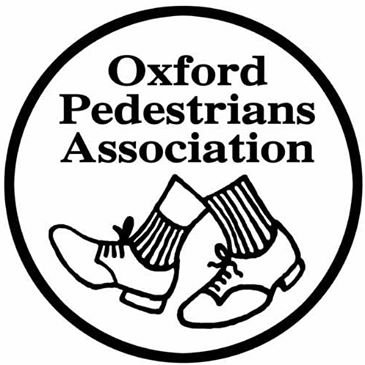Air Pollution and Transport in Oxford City
Guest Speaker: Roger Pitman with Owen South
Following our AGM, our Guest speaker was Roger Pitman, Oxford City Council’s Environmental Development Officer, on “Air Pollution and Transport in Oxford City”. He was accompanied by Owen South of Oxfordshire County Council’s transport department.
Roger opened with a vision of what Oxford was like when he first arrived 23 years ago, reminding us how Cornmarket and Queen St were choked with buses and their exhaust fumes. He had found a surprisingly poor city centre environment for pedestrians, especially as air quality was already on the official agenda, with a series of reports from the Department of Health linking air pollution with poor health. However, this was before there were means of quantifying this effect. Since then, the challenge has been to try to meet all needs by “improving the pedestrian experience whilst maintaining access to all transport modes” (Oxfordshire County Council current Local Transport Plan).
In 1999, the Oxford Transport Strategy was brought in and buses were diverted around the city centre to free Cornmarket for pedestrianization. The six-lane Frideswide Square was constructed on the site of the old LMS railway building as an alternative ‘queuing system’ for traffic, funnelling general traffic around the unofficial inner ring route (Hythe Bridge St, Worcester Place, Beaumont St, St Giles, the University area, Longwall St). Buses were given a separate route taking them up New Road and allowing them (with taxis and delivery vehicles) to continue using High Street from where general traffic was banned.
There is a now a legal obligation to declare to DEFRA when air quality objectives are not met. As air pollution still exceeds WHO ‘safe’ guidelines in several places (especially arterial routes and shopping centres), the whole of Oxford has been declared an Air Quality Management Action Area (AQMA). The City Council has focussed its attention on bus routes and persuading bus companies to invest in cleaner engines. However, the chemistry of air pollution is complex in its interactions of nitrogen oxides and ozone. Despite improved engines our city centre streets still exceed safe levels for air pollution.
In discussion, an interesting difference of opinion emerged between the City and County Officers. Owen South hopes that the proposals for Frideswide Square will keep traffic flowing without the present stopping and starting, and so reduce air pollution levels on Hythe Bridge Street. Roger Pitman, however, pointed out that car use is rising, and freely flowing conditions may encourage more drivers to bring cars through the city, making air quality worse. Since the number of buses in Queen St have has been reduced the air quality there has improved, but at the same time the air quality on St Aldates has dwteriorated. Particulate levels, however, have been reduced by the cleaner bus engines, and this is welcome as they were a source of the most hazardous air pollution. The City Council is now looking at introducing a city centre Low Emission Zone, from which polluting vehicles would be excluded, again aimed at buses.
There are static air quality monitoring points on St Aldates and High Street with a background monitor on Whitehouse Road. There are also about 50 ‘roving’ diffusion tube monitors that are moved around the city. Roger told us that air quality can be used as a determining factor in planning applications. We also raised the possibility of having the air quality indicator that used to be displayed in Ramsay House then reinstated in St Ebbes, to be on display in the Town Hall.
Both officers were warmly thanked for their contributions to a very stimulating evening.
NOTE: For full details of research and reports on air quality, visit www.oxford-airwatch.aeat.co.uk
